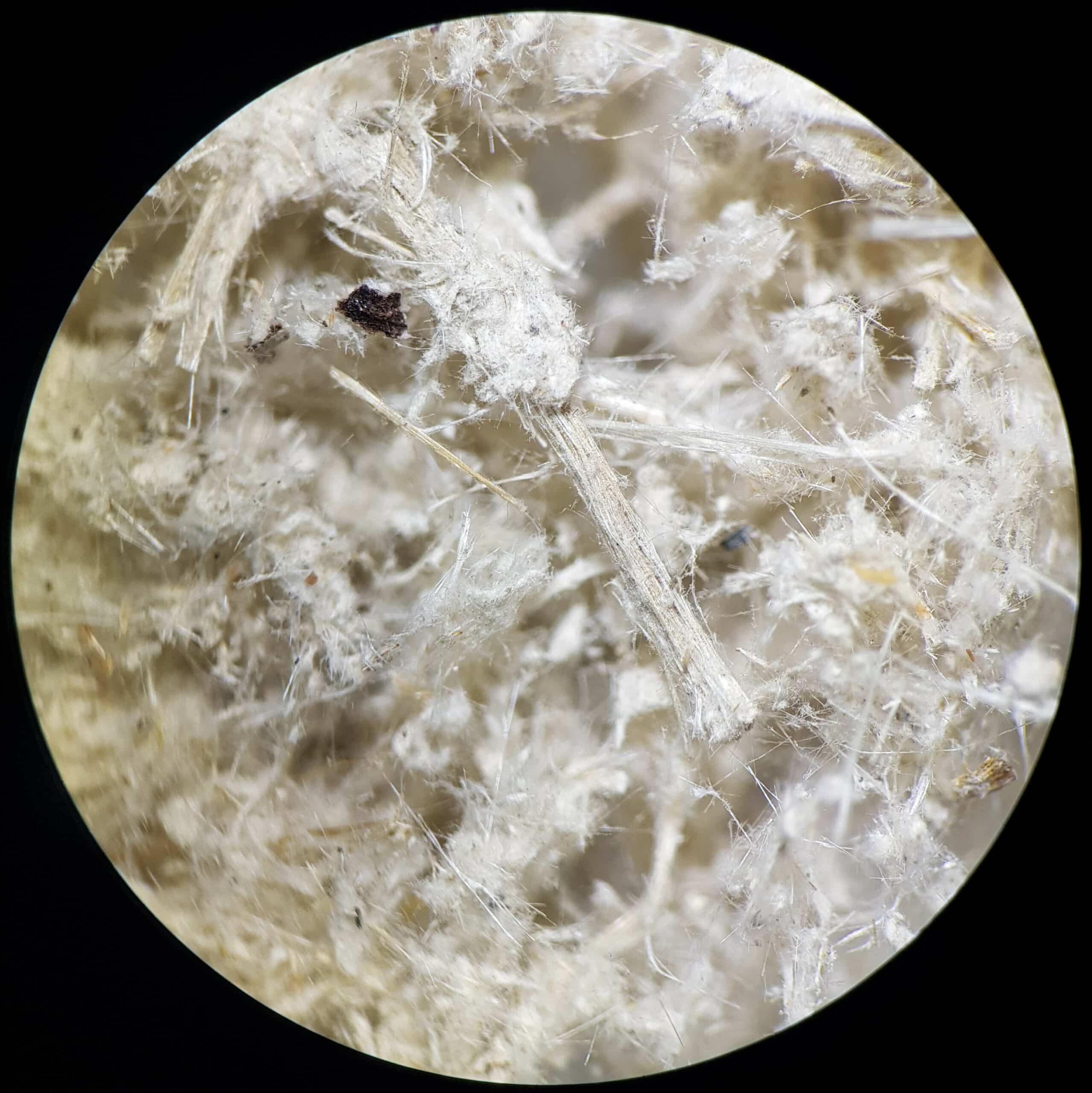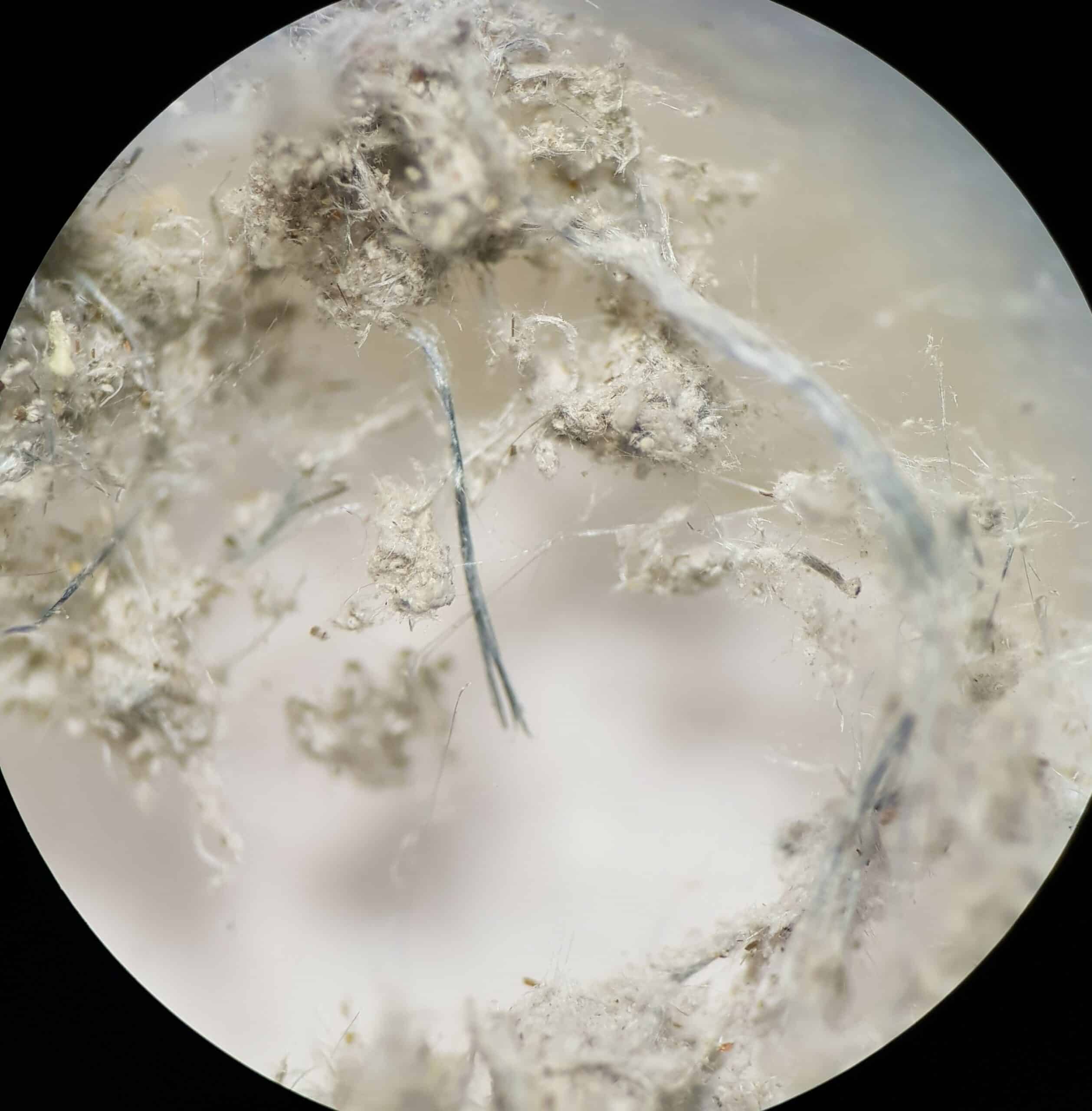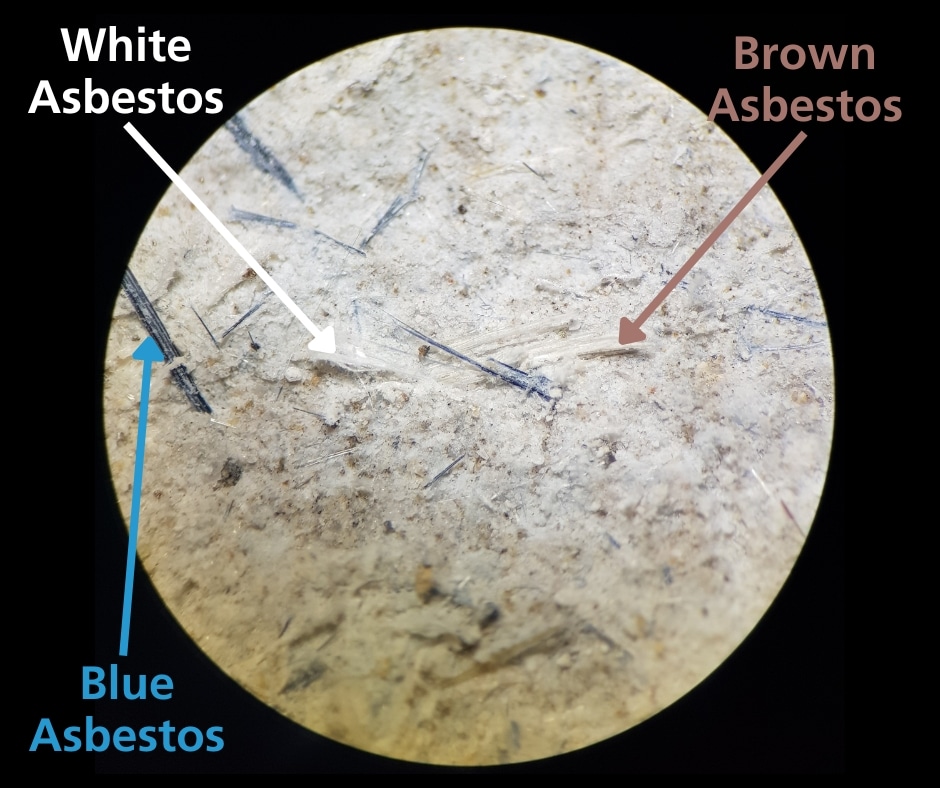Our Laboratory Manager Livia Fioravanti has written this interesting piece about the different types of asbestos and their risks to health, along with images taken from the microscope to show you what the fibres look like under magnification.
Asbestos is a group of naturally occurring minerals made up of many small fibres. There are 6 types of asbestos (see below) that belong to the amphibole or serpentine mineral families.

White Asbestos (Chrysotile)
Serpentine (curly fibre)
Chrysotile is the most commonly used form of asbestos. It can be found on textured linings and cladding (stucco, stipple or skim coat), plaster material, cement sheet cladding, roofing and drainage pipes, vinyl backing, roof tiles (bitumen or mastic-based pressed metal tiles that were produced before the early 1980s) and many other materials.
Manufacturers also used white asbestos in automobile brake linings, gaskets and boiler seals, insulation for pipes, ducts, appliances, textiles, ropes, etc.

Brown Asbestos (Amosite)
Amphibole (needle-like fibres)
Amosite was most frequently used in cement sheet, roofing and drainage pipes, fibre board and lagging for insulation around pipes, heaters, fire places, stoves and hot water cylinders.

Blue Asbestos (Crocidolite)
Amphibole (needle-like fibres)
Crocidolite was commonly used to insulate steam engines, in some spray-on coatings, textiles, cement sheet cladding, roofing and drainage pipes.
Tremolite Asbestos
Actinolite Asbestos
Anthophyllite Asbestos
All Amphibole (needle-like fibres)
Tremolite and actinolite are not used commercially, but they can be found as contaminants in white asbestos, vermiculite and talc.
Anthophyllite was used in limited quantities for insulation products and construction materials. It also occurs as a contaminant in white asbestos, vermiculite and talc.

Before the 1990s, asbestos containing materials (ACMs) were widely used in New Zealand in several building products due to their heat, chemical and wear resistance characteristics as well as providing structural strength to cement based products. Importation of raw brown and blue asbestos was banned in 1984. The official ban on importing any ACM wasn’t established until 2016 with the introduction of the new Health and Safety Acts. Asbestos was becoming less popular as a building material in the 1980’s and 1990’s, however there was still a large stockpile in New Zealand of asbestos and ACMs.
Therefore, buildings built, altered or refurbished from 1940 until the mid-1980s are likely to contain ACMs. Buildings built after 1 January 2000 are less likely to contain ACMs, but some buildings built after this time may contain ACMs. Some materials such as pipe gaskets and vehicle brake linings are still being imported that contain asbestos.
All types of asbestos are dangerous
Asbestos exposure is proven to cause cancer and other serious diseases, including mesothelioma and asbestosis. The risk of developing an asbestos-related disease increases with the number of respirable fibres you breathe in and how often you are exposed to these fibres. No ‘safe’ lower limit of exposure has been identified with certainty. All exposure is thought to add to the overall risk of disease development, however the risk from a single, low-level exposure would be unlikely to result in adverse health conditions.
Intact asbestos-containing material (in good condition) do not pose a significant risk merely by its presence. Potential risks occur if asbestos fibres become airborne. So, keep exposure to asbestos as low as possible, by:
- Testing the material to make sure it contains asbestos or not using an accredited laboratory
- Surveying where the asbestos can be present in your business or property, so you can properly manage it
- When necessary, properly removing and disposing of the material (e.g., hiring a professional asbestos removalist)
- Following NZ Health and Safety at Work (Asbestos) Regulation 2016. We also recommend WorkSafe website and the Ministry of Health website for more information.
It is always safer and cheaper to avoid asbestos contamination and exposure. If not properly maintained, removed or disposed of, asbestos will cause a much bigger problem to your health and pocket. For example, the soil around your home may get contaminated with asbestos from inappropriate removal or storage, or from deteriorating roof or wall cladding, generating a costly clean-up bill. Work on unidentified ACMs such as flooring materials and stippled ceilings can cause wide spread contamination throughout a building. The result of this would be a lengthy and costly clean-up project.
Chemsafety can help you with testing, sampling, asbestos surveys and management plans. For more information contact us.

